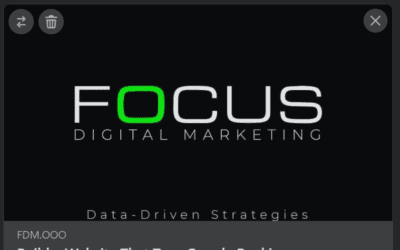So Your Logo Has a Twin: Next Steps
Discovering your logo closely resembles another’s can plunge any marketer into a state of alarm. Suddenly, the worry of trademark infringement looms: Are you at fault, or are they? Who bears responsibility? In this article, I’ll explore the legal nuances of such dilemmas. Please note, that I’m not a lawyer, and this should not be taken as legal advice, but rather as my understanding of what I’ve learned through navigating these issues.
Understanding the Sleekcraft Test
The Sleekcraft test, derived from the 1979 case AMF Inc. v. Sleekcraft Boats, evaluates potential trademark infringements by examining various factors, such as the strength of the mark, proximity of the goods, and likelihood of confusion among consumers. It’s particularly relevant when two logos resemble each other but serve different markets or intentions.
- Strength of the Mark (logo): Evaluates how recognizable and distinct the trademark is within the context of its use.
- Proximity of the Goods: Considers how closely related the products or services of the competing marks are.
- Similarity of the Marks: Looks at the visual, auditory, and conceptual similarities between the marks.
- Evidence of Actual Confusion: Seeks concrete instances where consumers were confused between the two marks.
- Marketing Channels Used: Examines whether the two marks use similar distribution and marketing channels.
- Type of Goods and Degree of Care Likely to be Exercised by the Purchaser: Considers the nature of the products/services and the level of care a typical buyer would use in making a purchase.
- Defendant’s Intent in Selecting the Mark: Investigates whether the alleged infringer chose the mark intending to create confusion.
- Likelihood of Expansion of the Product Lines: Assesses the potential for either party to expand into new markets or product lines, increasing the likelihood of confusion.
Legitimacy in Unintentional Resemblance
If your brand independently created a logo that accidentally mirrors another, and there’s no intention to represent your brand as the other, you likely do not meet the Sleekcraft test for infringement. This distinction is crucial for independent brands navigating potential legal challenges.
Case Study: Mosley v. Secret Catalogue, Inc.
In a landmark case, the owner of Victor’s Secret, a small retail operation, was sued by Victoria’s Secret under the claim that the similarity in name could lead to confusion among consumers. The case, Mosley v. Secret Catalogue, Inc., reached the Supreme Court, which ruled that for a claim of dilution by tarnishment to succeed, there must be evidence of actual harm to the plaintiff’s brand.
Layman’s Summary: Simply put, the Supreme Court found that Victor’s Secret wasn’t automatically infringing on Victoria’s Secret’s trademark just because of a similar name. Without clear evidence that Victor’s Secret was harming Victoria’s Secret’s brand, there was no case of trademark dilution.
We’ve Been There Too: FOCUS Digital Marketing’s Experience
Speaking of similar names, we at FOCUS Digital Marketing have been down that road ourselves. Being over 20 years in the game, we’re pretty much the OGs in digital marketing. Yet, we’ve seen a bunch of businesses pop up with names that sound eerily like ours. It’s a bit flattering but also a tad frustrating, you know? However, our branding is distinct—like, really distinct with our colors and designs. And as much as we notice the name-dropping, these other businesses aren’t mimicking our style or claiming our vibe. So, legally, there’s not much to be done. It’s all good, though. We focus on what we do best: delivering top-notch marketing solutions worldwide, sticking to our unique branding guidelines.
When Similarity Leads to Infringement
Contrastingly, the case of a local coffee shop named “Starbocks” was sued by the coffee giant Starbucks highlights a scenario where the smaller entity was found to infringe upon the established brand’s trademark. The similarity in name, branding, and the direct competition in the same market space led to a ruling against “Starbocks,” emphasizing the legal protections against consumer confusion and brand dilution.
Actionable Steps for Brands with Similar Logos
Upon discovering a similar logo, conduct a comprehensive trademark search and consider consulting with a trademark attorney.
Now should you run out and drop thousands on an attorney? Well, that is up to you, but I would suggest reviewing the Sleekcraft test requirements above and subjectively answering them, and if there is a very intentional use of your logo then you probably are better off putting that money back into the business.
In short, ask yourself this question “Are they trying to make people think they are me” If the answer to that is not yes then best to save your money.







